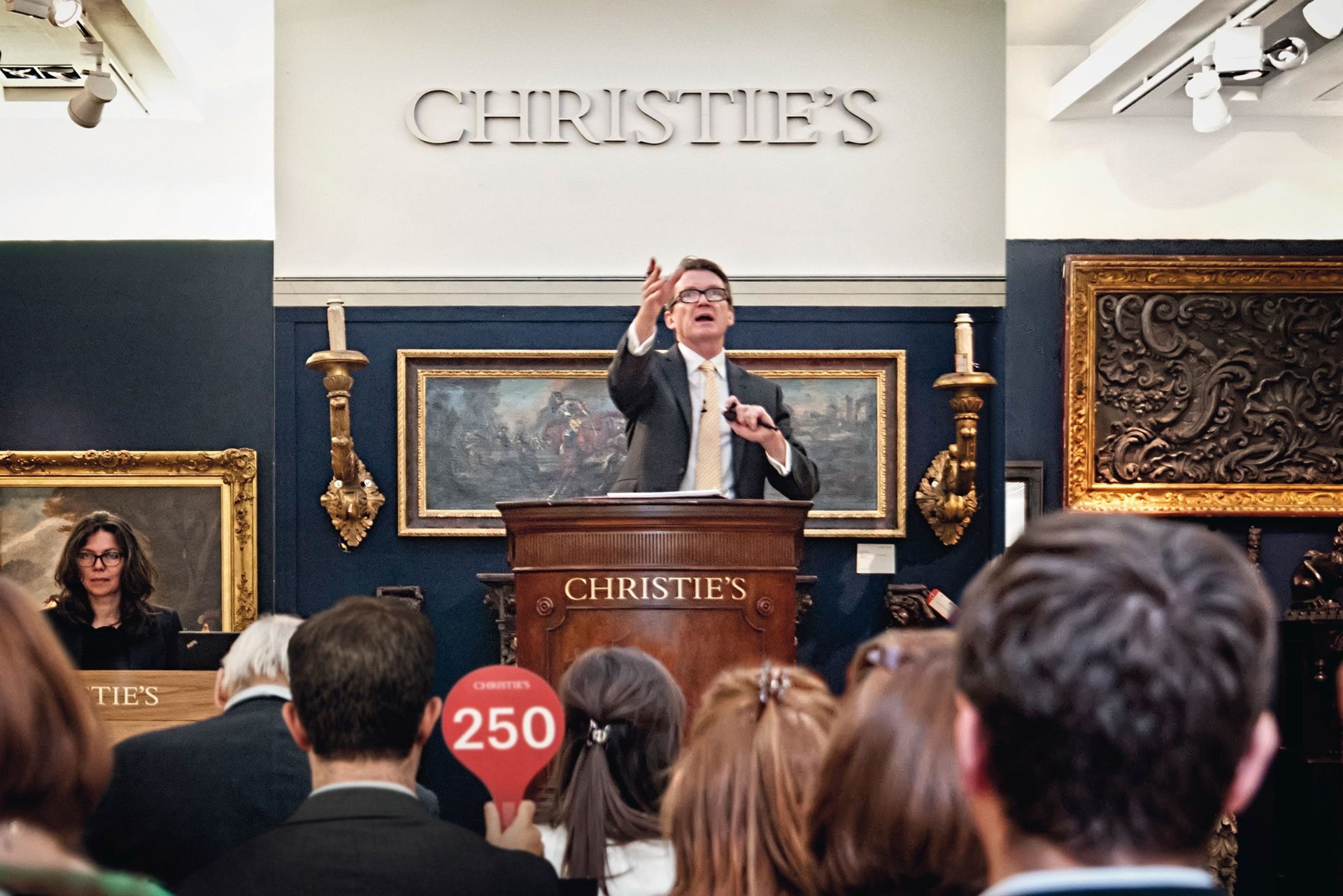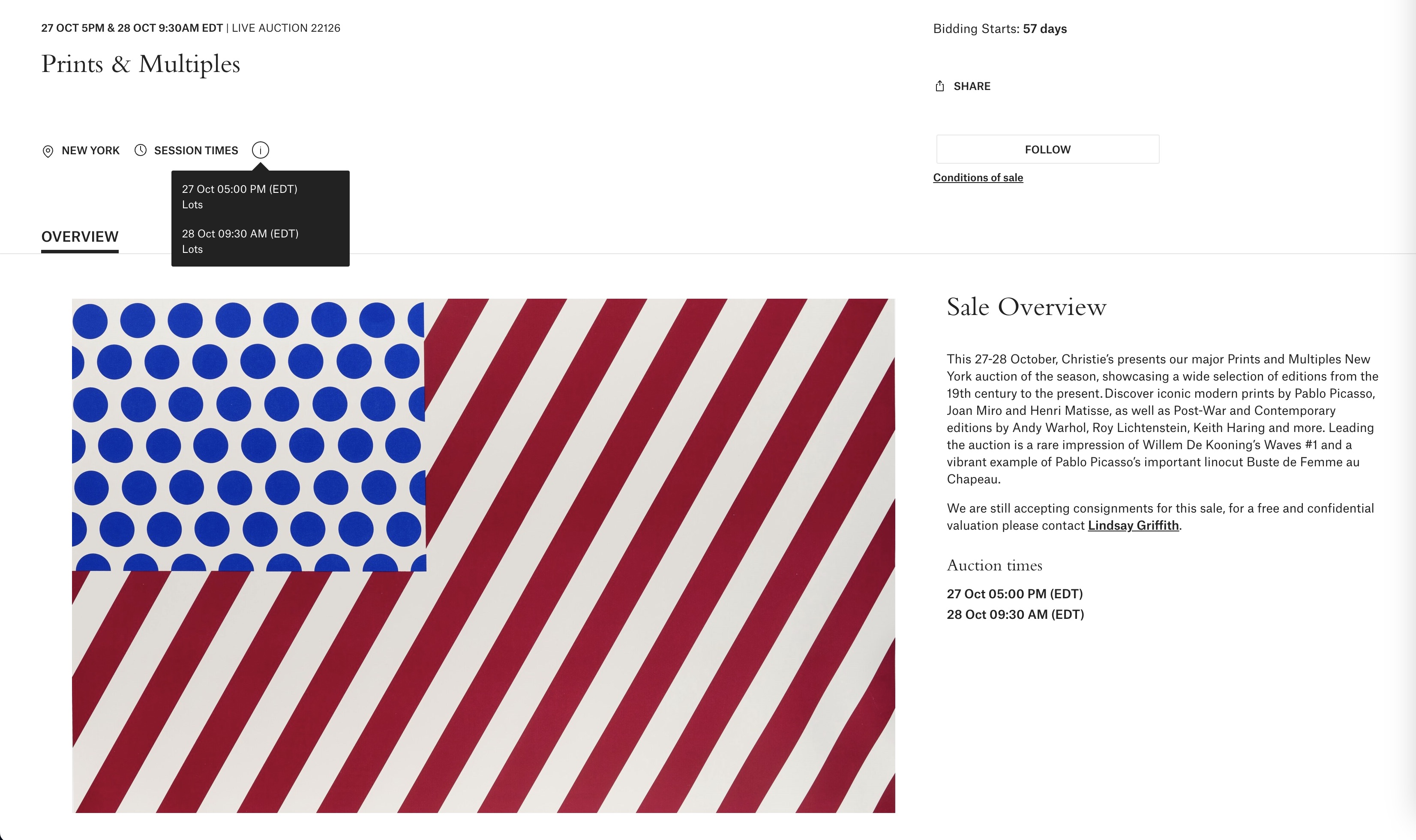Disclaimer: This blog is intended solely for research purposes and is only personal opinion. I do not hold any copyright claims over the images presented herein. I harbor no hostility, nor do I intend to make derogatory remarks about any auction houses. On the contrary, I genuinely appreciate and acknowledge their irreplaceable contributions and professional endeavors within the realm of the art world.
In short, please don’t sue me…
Plus if there is any fact wrong or opinion biased please remind and correct me. Any discussion is welcomed.
Let’s go back to the initial, primitive, and most well-known impression of auctions - auctions that are run by renowned auction houses and sell real estate, fine art, antiques, and wines. (Finally, not the crazily abstract Google Ad auction that you definitely want to murder the scientist who invented that stuff).
 One of the top auction houses - Christie’s. <- Take a look at their website, they definitely know art!
One of the top auction houses - Christie’s. <- Take a look at their website, they definitely know art!
The fine art market, along with the classical auctions that serve as the spotlight of the industry, in my point of view, is a lucrative field for academic study. It’s an interdisciplinary field encompassing game theory, law, finance, psychology, and, of course, art. The market size is huge in terms of monetary value - and relatively free and anonymous and harder to regulate because, well, art is art while everything else is everything else. Because of this, it attracts a vast crowd with various motives - the whales of fortune who really own or buy the pieces; intelligent people and intermediates who seek to navigate the system to benefit themselves a little from the frenzy; and possibly sometimes, the professionals and artists who really do care about art. It might be a fertile field that generates interesting research topics, and I would definitely like to delve into it later.
In the fine art market, we have auction houses that act as intermediaries, coordinating the buyers and sellers by hosting auctions and providing other related services such as verification and shipping. But in the common daily item market, we have eBay as the intermediary platform as well. How are they different from each other? Intuitively, like some people who run startups in Silicon Valley would undoubtedly raise the question - why isn’t there (or can’t we establish) an open platform that facilitates online art-piece auctions, speeding up the process with transparency? Why not take over those inefficiently crappy auction houses and get the profit ourselves?
Not really. The art market is far from being a free market that can be migrated to an app or a website; it’s the opposite - a market with friction. And people (billionaires and trillionaires) love that friction.
To begin with, even if the transaction fee that a public internet second-hand platform offers is substantially lower than that of auction houses (eBay charges about 15% of the total amount, but auction houses sometimes charge up to 50%), billionaires would still opt for auction houses for their anonymity and service. The sense of friction - having to pledge millions of dollars and pay to join an auction - is precisely what those rich people are looking for. They want to feel special, different from the general public, and maintain a high bar of entry to filter their “kind” into the game.
Things become even more interesting when there are two existing rival forces - Sotheby’s and Christie’s. The two top auction houses are almost equivalent in market size and impact, essentially resulting in a duopoly competition. This leads to insanely funny dynamics, to the extent that the main expenses and human resources that the auction houses invest in are not evaluating artworks or building professional networks, but maintaining their relationships with elite sellers and buyers.
 One of Christie’s upcoming auction - WOW! I recognize a Lichtenstein when I see one.
One of Christie’s upcoming auction - WOW! I recognize a Lichtenstein when I see one.
Simply put, the huge imbalance of sellers and buyers (or, supply and demand) in the fine art market creates a massive incentive for the auction houses to court the sellers and pressure the buyers - especially for famous pieces. They don’t even charge the sellers for intermediary fees but compensate them with a percentage of the transaction fee charged from the buyers. Even worse, the terms are non-negotiable for the buyers but open to bargaining for the sellers. Moreover, the auction houses have huge PR departments that take care of their elite clients’ personal “happiness” - their kids’ birthday greetings, charity events, and so on - all in an effort to maintain the trust and endorsement of their clients and encourage them to sell or buy the next Da Vinci piece.
I would say, if some company wants a PR team, they should go hunting for talent at the auction houses - they must have the best on the planet.
Btw, at last, I’d like to tribute a little to today’s post on the market design blog, which included a (free!) sharing link to a brilliant New York Times article. It was an enjoyable read and, as always, a valuable source of inspiration for a market designer. This article sparked the idea I had today.